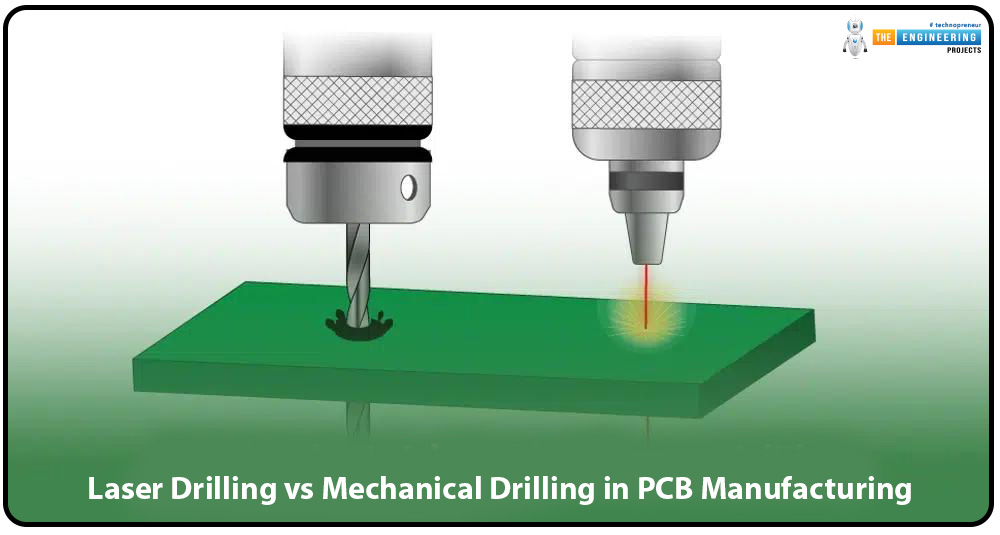
The printed circuit board (PCB) is the backbone of electronic circuits, and for complex circuits, multi-layer PCBs are utilized to enhance productivity. PCB drilling is a crucial process, especially in multilayer PCB production, and involves precise via creation through laminate material. We know that vias are important conduits that bridge the gaps between multiple layers of PCBs. These are considered the conductive connections in a PCB, especially if it has multiple layers. Without vias, the multilayer PCBs have limited design flexibility and are impractical. In PCB manufacturing, there are multiple drilling types, but today I am going to discuss the comparison between the two most important methods, i.e. mechanical drilling and laser drilling.
The appropriate drilling technique selection ensures the right hole placement, optimal hole quality and reliable performance. Lasers and mechanical drilling have their own merits and demerits. Drilling is a sensitive process, and even a small mistake can damage the PCB if the manufacturer does not keep the required measures in mind. Multiple factors affect the best choice between the two but choosing the best PCB platform can make this task easy.

Best Laser/Mechanical Drilling PCB Manufacturer
PCBx Fabrication House is the leading platform that provides high-quality, low-priced PCBs and turnkey assembly services. PCBx offers all types of PCBs and has the prestige of presenting a seamless solution for laser drilling or mechanical drilling in PCBs. Drilling is a delicate process in PCBs, and we use advanced technologies for sharp, clean, and accurate drilling results, no matter if you are interested in laser drilling or mechanical drilling.
With the latest cutting-edge technology (including AI), the PCB order process is smooth, and we deliver the best PCBs with a smooth assembly and drilling process. Our top-notch automated inspection (SPI, AOI, and AXI) services make it possible for us to deliver the best products in mass production in the least time. With the 3D SPI, 3D AOI, and 3D AXI, the whole production process is under critical inspection to deliver the best product.
The latest technology not only helps to perform a smooth production process, but the top-quality drilling process is the prominent feature of PCBx services. So, if you want to get instant quoting, the most convenient ordering process, and top-quality drilling in your PCB, then you should check PCBx. Let me show you the face of the PCBx website:
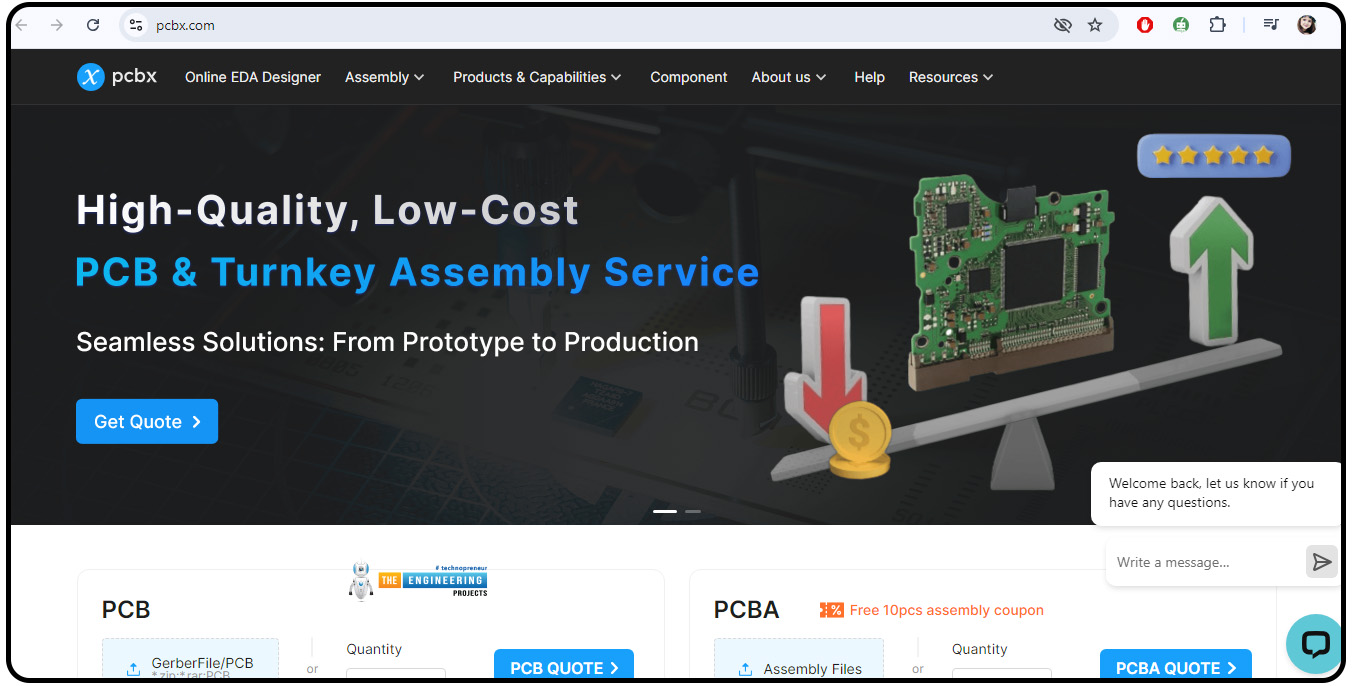
The drilling process is crucial for multiple-layer PCBs, and we are offering competitive prices for drilling and multi-layer PCB production I would encourage you to try out our services and get the best quote not only for mechanical or laser drilling PCB manufacturing but also for assembly and design.
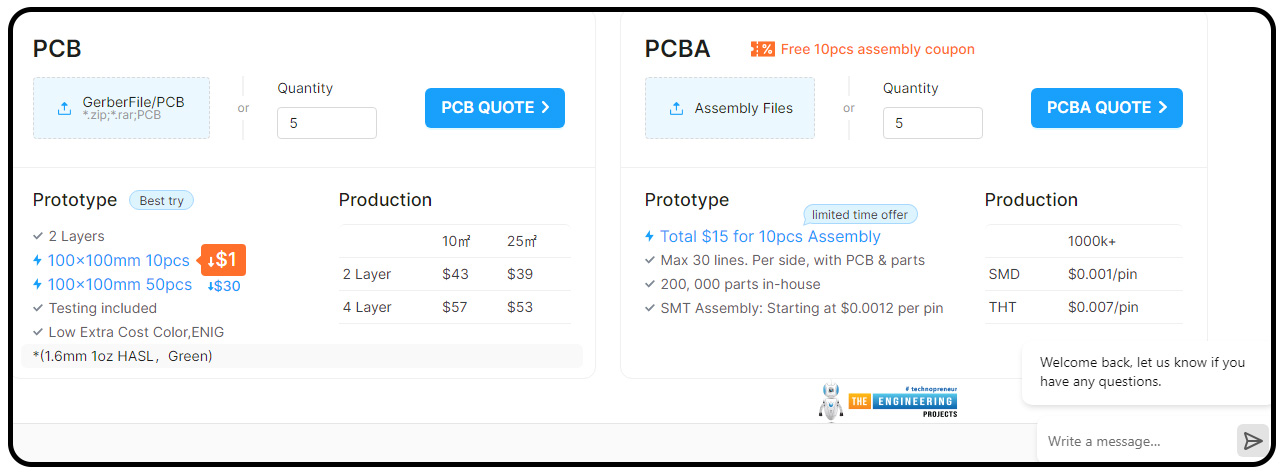
Now, let's discuss the comparison between mechanical and laser drilling and then choose the best option according to your needs.
Mechanical Drilling in PCB Manufacturing
The mechanical drilling in PCB production relies on the rotating bit tool to drill small holes in the laminated material. Usually, the drill bit can be used repeatedly because of its micro-granule cemented carbide structure. It can be reshaped and reused up to three times, depending on the type of PCB vias. In the case of mechanical drilling, the standard fiberglass and resin content laminate is used with a copper foil covering as a substrate, also termed FR4.
The drilling element in this method consists of the pneumatic mandril, which provides almost 300,000 rpm speed to the drill; therefore, high accuracy is required for holes of small sizes. For this, the drill is mounted on the servo-mechanical system so it may move along the X and Y axes. Moreover, the particular actuator works for the PCB movement in the Z axis. As a result, the user gets a smooth, clean, and accurate output.
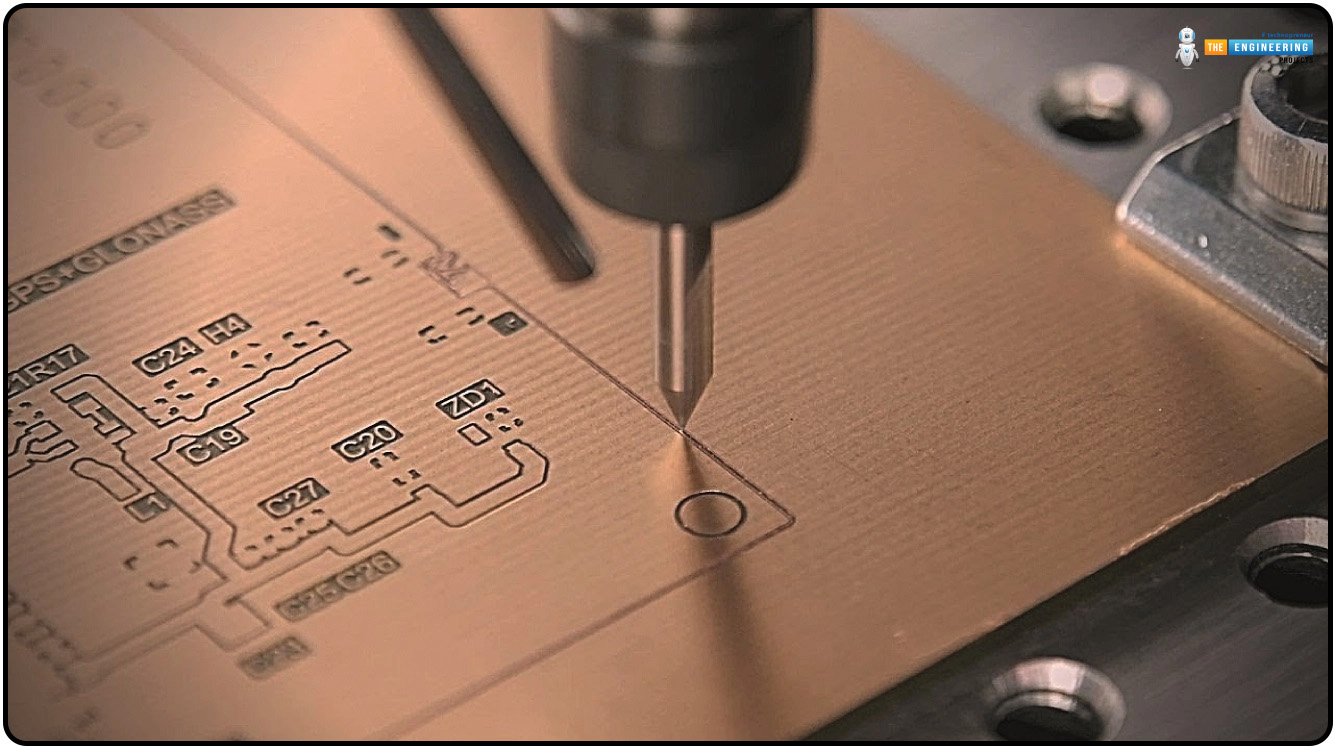
Mechanical Drilling Advantages in PCBs
Here is the list of common pros of the mechanical drilling process in PCBs:
The most common advantage is control over the hole depth with mechanical drilling. The bit tool penetrates deeper than the laser drilling hole. This is an important factor, especially if the manufacturer is working with a PCB with a large number of layers.
It gives high-quality holes consistently with the same sharpness, and it doesn’t matter how many holes are drilled.
The mechanical drill does not have any tapers at the end; therefore, the holes are completely drilled through the substrate without any bevels. As a result, the manufacturer gets a clean knee of the wall and a sharp edge finish.
This method allows the user to have a faster drilling speed than laser drilling, resulting in a good throughput level at a given time if all the preparations are done correctly. It works even better on PCBs with dense vias.
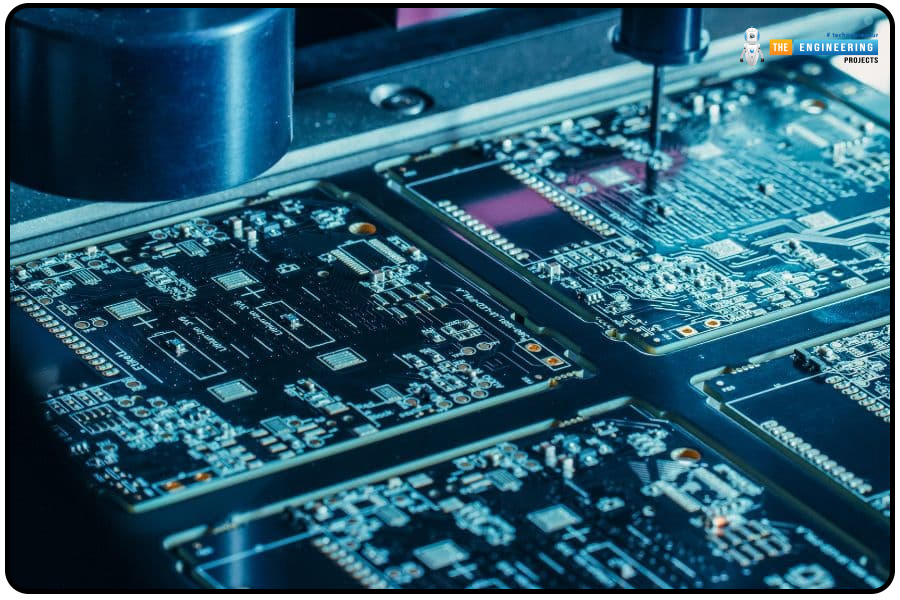
Mechanical Drilling Disadvantages in PCBs
Now, let’s have a look at the negative aspects of this technique:
Mechanical drilling is an old and outdated method; therefore, it is not perfect for all types of projects.
When using mechanical drilling, the manufacturers have constraints on drill bit size, resulting in fewer via-size options. The narrow holes require a narrow drill, which has a great chance of breakage. For instance, if a high trace dense PCB requires less than 5 mils in diameter via holes, the required bits of diameter 0.008 inches, or 1/64ths of an inch, are too delicate for use in mechanical drilling.
Usually, the bits have a large size; therefore, this technique is not suitable for the latest, smaller but more complex PCBs.
If the right precaution is not taken, the mechanical drilling can cause tiny metal fragments (usually copper) that can stick to the PCB surface and affect its performance, so there is a need to clean the PCB after drilling.
There is a need to deburr the PCB vias after drilling, which is a time-consuming task.
It is an expensive method, and its preparation and post-processing are time-consuming.
Laser Drilling in PCB Manufacturing
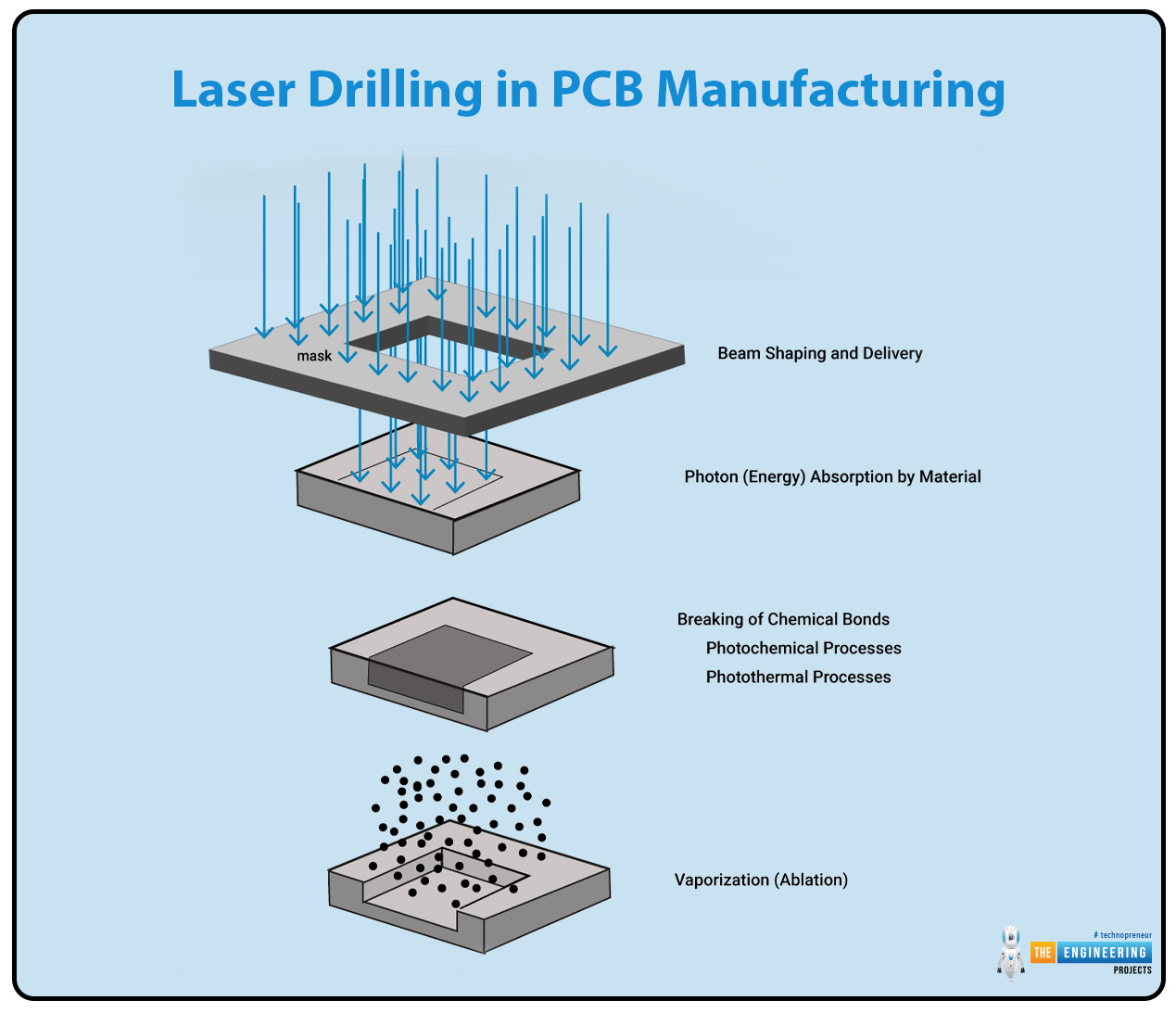
Laser drilling is the PCB drilling process that consists of a complex optics set that makes holes in different PCB layers with 200 μm or even less. As a result, highly precise and sharp drills can be drilled in the PCBs. The size and diameter depend on the laser beam opening, and the exposure time of this bean determines the hole depth. There is a set of particular lenses that perform the duty of bean concentration on a particular point for PCB drilling. This drilling type allows the beam to create even micro vias, blind vias, etc. but also eliminates the delamination. The beam shaping technology is responsible for projecting the laser on the substrate, and as a result, this energy breaks the chemical bond. This process releases the steam that generates the recoil pressure and applies the downward force to the molten material. This results in the molten material flowing out of the hole, so the manufacturers get a clean and sharp hole.
The beam ablates a fine hole in the copper layer, following the substrate materials and the beam type is selected depending on the substrate type of PCB manufacturing. The two most common laser types are:
UV lasers
CO2 lasers
The ultraviolet lasers are more precise and find applications in high-density interconnect (HDI) PCBs. Not only for vias, but this method is considered ideal for PCB cuttings. Conversely, carbon dioxide (CO2) lasers are less expensive but have larger wavelengths. It finds its applications in dealing with different materials in PCB, such as plastics, ceramics, and composites.
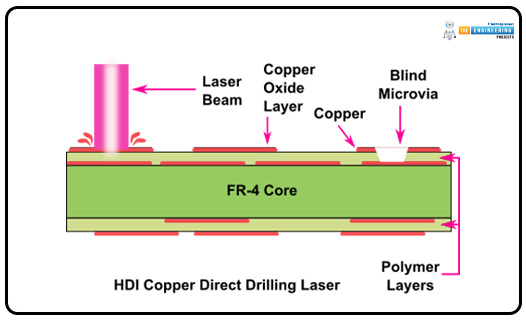
Laser Drilling Advantages in PCB Manufacturing
Have a look at some important pros of laser drilling:
Laser drilling ablates through a large variety of substrate materials. Therefore, has a great scope for PCBs related to different industries.
It is a non-contact technology, and most processes are automatic; therefore, there are fewer chances of PCB breakage or damage.
Once the laser beam settings are done and the drilling process starts, there is no need for manual changes at every point but just supervision. The laser machine performs all the duties.
It has a high production rate because a large number of holes can be drilled into a single PCB at a time.
It is the latest technology and, therefore, suits the latest complex, smaller, and more advanced PCBs.
Laser Drilling Disadvantages in PCB Manufacturing
Here are some negative points about the laser drilling technology:
A metal stop layer is required in PCBs to halt the laser drilling process. Without this layer, the stopping process is challenging.
Lasers suit the smaller hole size because the chemical bond breakage requires a lot of time, effort, and energy.
The aspect ratio (AR) is the hole’s copper plating indicator, and there must be great accuracy in maintaining the AR ratio; otherwise, it’s difficult to get the ideal output. The formula for the AR is given next:
AR= Depth of the hole / Diameter of the drilled hole
PCBx offers the perfect AR ratio; therefore, our clients get a clean and sharp drilling process at all times, even for mass production.
Considerations When Choosing Between Mechanical Drilling and Laser Drilling
Multiple factors affect the best choice for the particular PCB type. The following parameters will help you choose the best technology for your PCB manufacturing:
Size of Vias in PCB
One of the most crucial points to consider while choosing the drilling technique is the size of the vias. As discussed before, laser drilling allows the manufacturers to drill small-sized holes with accuracy as compared to mechanical drilling. When studying the vias size, the two most important parameters to keep in mind are:
Pad to Hole Ratio=Hole Diameter/Pad Diameter
Aspect Ratio= Depth of the hole / Diameter of the drilled hole
Hence, mechanical drilling is suitable for PCBs with large vias and thicker borders otherwise, laser drilling works with smaller vias size.
Through Hole Vias in PCB
This is the type of vias that goes throughout the PCB while manufacturing and the uncomplicated type of vias because there is no need to take care of the particular layer length. For the PCBs where the manufacturer has to create multiple through-hole vias, mechanical drilling is a better option due to its superior control and grip in depth. On the contrary, if the via size is small then you have to choose laser drilling.
Substrate Type in PCB
The drilling technique must be according to the type of substrate and other PCB material. For instance, laser drilling can cause thermal stress or delamination in the substrate like FR-4 (Fiberglass) but for polyamide, laser drill is a good choice.
Mechanical drilling is effective for substrates like FR-4, metalcore, polyimide, etc but for the flexible substrate, laser drilling is preferred.
Cost of Drilling in PCB Manufacturing
The cost is another fundamental criterion for choosing the best drilling technique for your PCB. Mechanical drilling and laser drilling are distinct each with varying operational costs. Although laser drilling provides more production and can deal with small vias effectively its processing cost is high and due to its complex handling, experts are required.
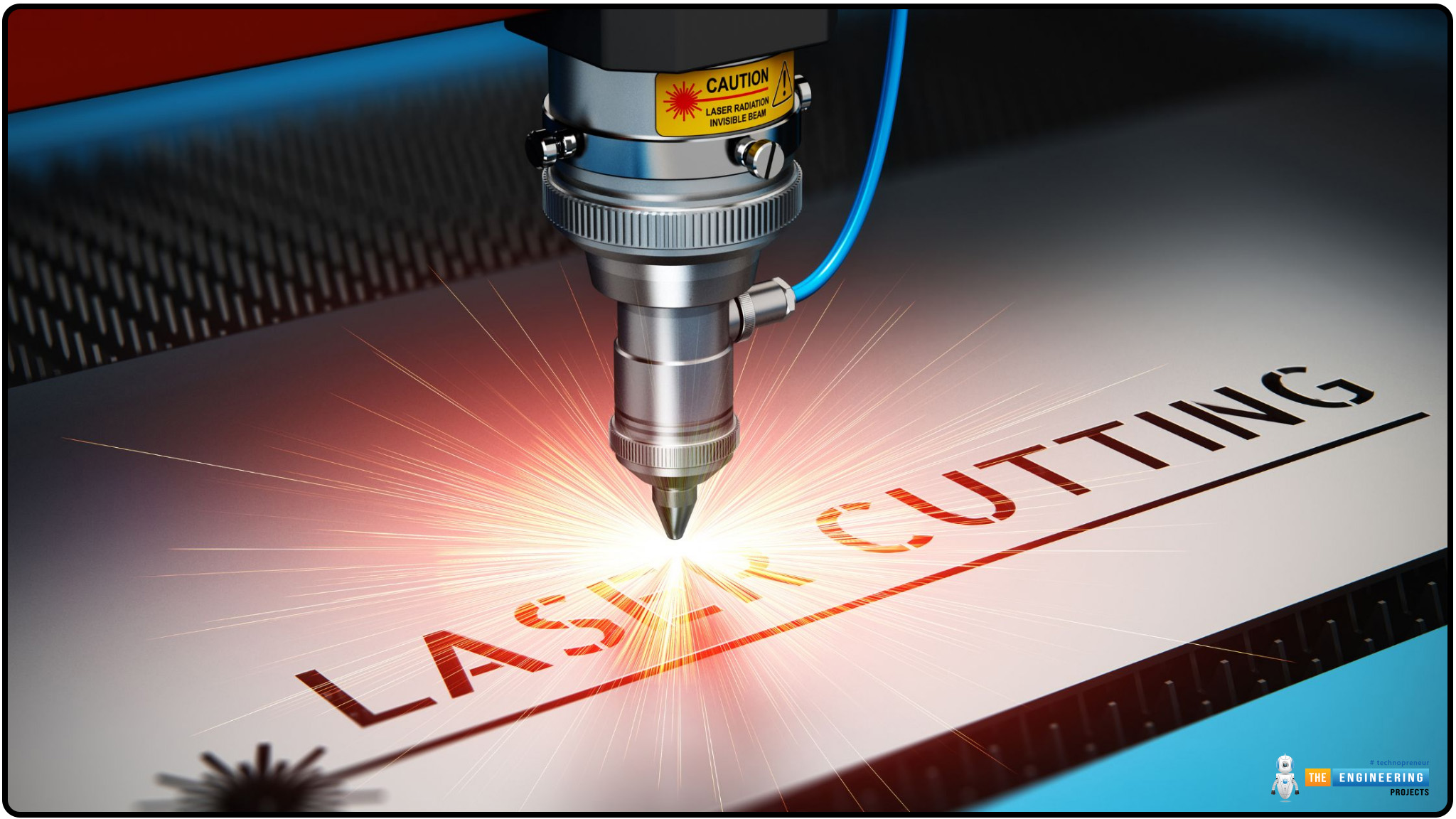
On the other hand, mechanical drilling is slow but it uses traditional machinery and costs less but the regular maintenance of drill bits and machine make it expensive for bulk orders. PCB manufacturers have the machinery for mechanical drilling which does not require much technical skills so usually, it costs less as compared to laser drilling.
Hence, the cost of any of these methods depends on the number of PCBs, via size, via type, and other parameters.
Conclusion
In PCB manufacturing, mechanical drilling and laser drilling are two of the major drilling techniques that are widely used in different PCB types. Mechanical drilling is a conventional, easy, and accurate drilling method that is useful for larger via size, hard substrates, and high AR, and pad hole ratios. On the other hand, laser drilling is the latest, cleanest, and most automated drilling technique. Different types of vias and their size play a role in choosing the right drilling technique. Each method has its demerits and drawbacks, and I hope I’ve cleared up different points. Now you can choose the best technique according to your PCB. If you want more assistance, you can contact us directly.



